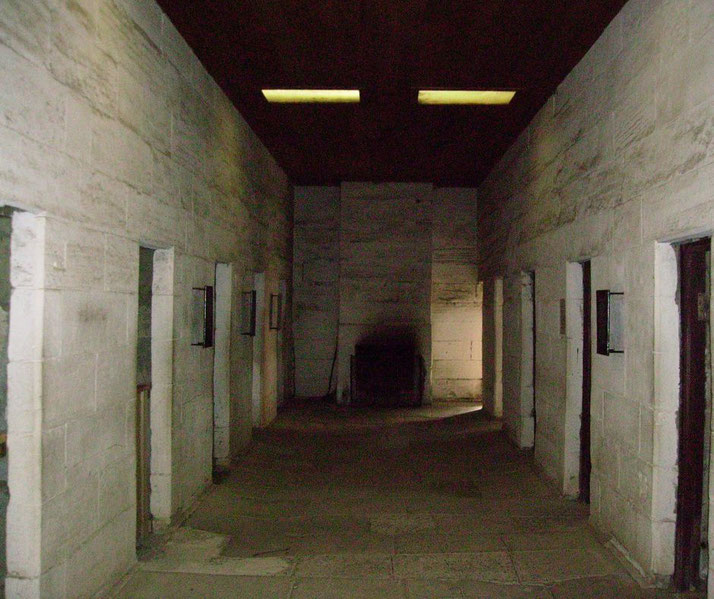The brutal convict prison at the edge of the world

Port Arthur, which lay on the isolated Tasman Peninsula, became one of the most feared penal settlements in the British Empire during the nineteenth century.
It was designed to be the centre of secondary punishment for repeat offenders transported to Van Diemen’s Land, who had already proven disobedient at other locations.
From its founding in 1830 until its closure in 1877, Port Arthur was part of a strategy by the colonial authorities to control convicts through a regime that isolated individuals under strict discipline while requiring demanding work routines.
Founding and expansion
The settlement, which Lieutenant-Governor George Arthur oversaw, began as a timber station that supplied government works in Hobart with useful timber.
As more repeat offenders arrived from other settlements, Port Arthur gradually evolved into a full-scale penal institution.
Authorities constructed its facilities around the natural inlet, and they took advantage of the surrounding rough terrain and narrow isthmus at Eaglehawk Neck to prevent escape.
Armed guards and a line of tethered dogs created an early form of a security cordon, which successfully discouraged most escape attempts.
By the 1840s, the prison had expanded to include a large penitentiary, a hospital, workshops, officers’ quarters, and a church.
Officials designed the penitentiary building from a converted flour mill and granary and modified it to house hundreds of inmates across several tiers according to classification and behaviour.
Hard work took up most of the inmates' daily lives. Convicts worked in shipbuilding yards, carpentry workshops, brick kilns, stone quarries, and gardens.
Some constructed roads, cut timber, or operated sawmills. The intention behind such labour lay in the belief that structured work would build discipline and improve behaviour.
Separate Prison System and Juvenile Reformatory
From the late 1840s and early 1850s, Port Arthur gradually adopted the Separate Prison system, which aimed to punish through isolation and silence rather than physical pain.
Construction of the facility began in 1848 and finished in 1853. Proponents of the system argued that such psychological pressure would encourage reflection and reform, though in practice, it led many to suffer mental breakdowns.

Many boys found themselves confined at Port Arthur as well. The Point Puer Boys’ Prison, which was located across the harbour, housed young offenders separately from the adult population.
It operated from 1834 to 1849 and attempted to combine discipline with vocational training.
Authorities hoped that early intervention might prevent boys from becoming lifelong criminals.
However, the strict routines and isolation mirrored those imposed on adult convicts, often undermining the institution’s rehabilitative attempts.
Punishment and Decline of Transportation
Punishments at the prison were increasingly harsh and could include flogging, solitary cells, chains, and reduced rations: all which remained in use throughout the penal period.
Officials viewed punishments like these as necessary to maintain order among a population they considered unruly.
Escape attempts still occurred, though few succeeded. The most infamous case involved George “Billy” Hunt, who attempted to flee by disguising himself in a kangaroo skin, only to be shot at by guards who hoped to secure a meal.

By the 1850s, changes in British penal policy and a growing movement against transportation began to affect Port Arthur.
Transportation to Van Diemen’s Land ended in 1853. Without a steady stream of new convicts, the prison population declined.
Many older and frail men remained behind, and critics called Port Arthur a “moral hospital” rather than a deterrent prison.
The institution continued to operate for two more decades, housing a diminishing number of convicts alongside invalids suffering from mental illness.
Closure and Early Heritage Recognition
The colonial government officially closed the prison in 1877. Over the next few decades, the site underwent a slow transformation.
Many of the buildings fell into disrepair or were destroyed by bushfires in 1895 and 1897.
Local settlers began referring to the area as Carnarvon in an effort to distance themselves from its penal past.
Yet the ruins soon attracted tourists, and by the early twentieth century, Port Arthur had become one of Tasmania’s earliest heritage attractions.
The site's inclusion on the Australian National Heritage List and as part of the UNESCO World Heritage Australian Convict Sites in 2010 recognised its role in the larger story of Australia’s convict origins.
The buildings that remain, including the penitentiary, the Separate Prison, and the ruins of the church, offer physical reminder of a penal system that impacted generations of people.
Tragically, Port Arthur became known for another reason in 1996, when it was the site of the worst mass shooting in modern Australian history.
The event led to national gun law reform. Since then, Port Arthur Historic Site has included a remembrance garden to those who lost their lives in the massacre.
What do you need help with?
Download ready-to-use digital learning resources
Copyright © History Skills 2014-2025.
Contact via email
With the exception of links to external sites, some historical sources and extracts from specific publications, all content on this website is copyrighted by History Skills. This content may not be copied, republished or redistributed without written permission from the website creator. Please use the Contact page to obtain relevant permission.





